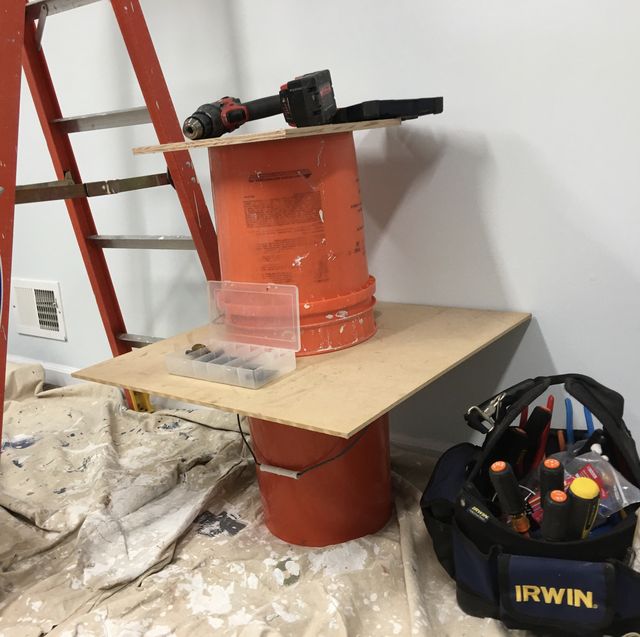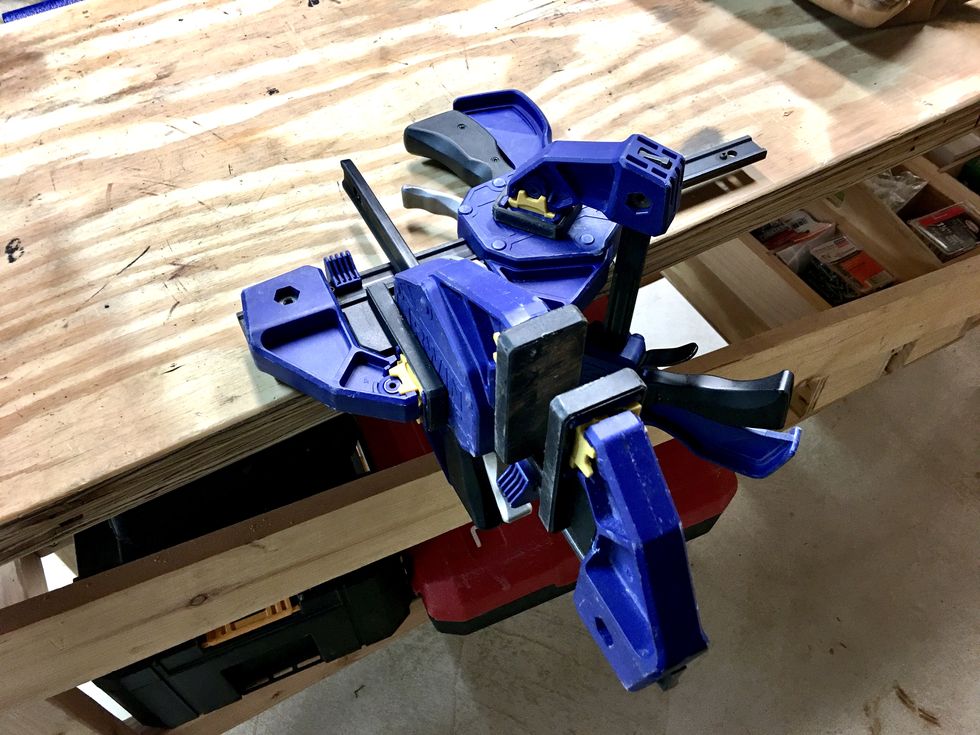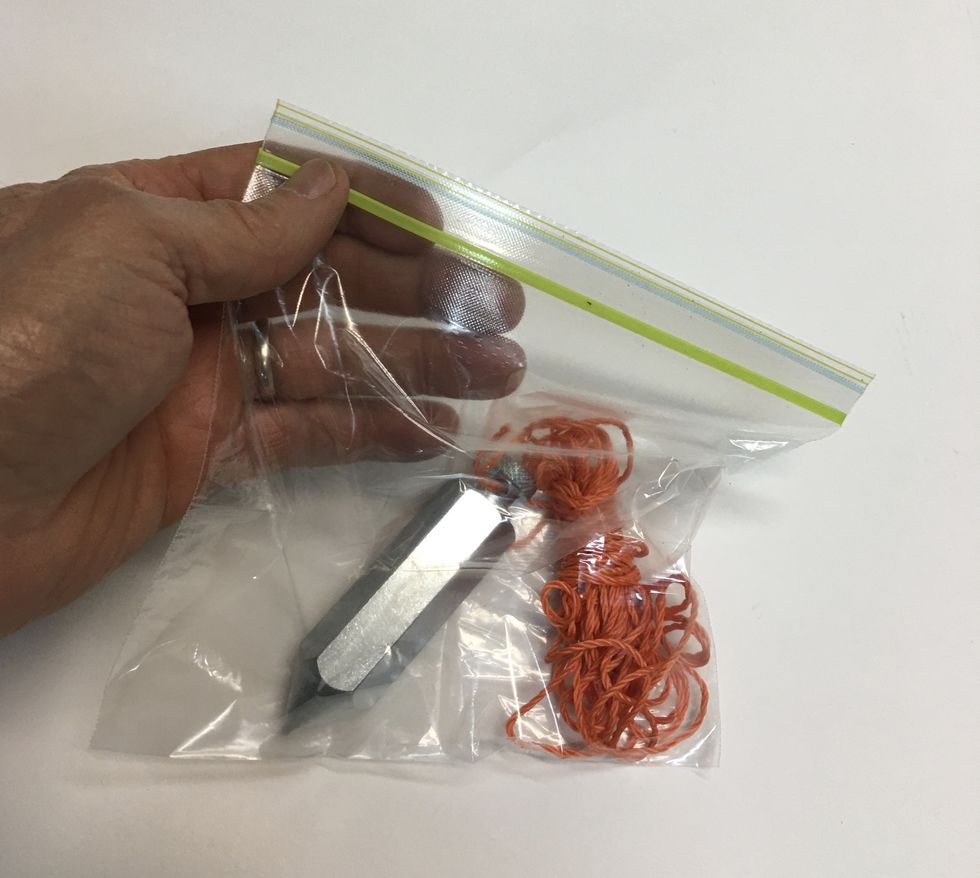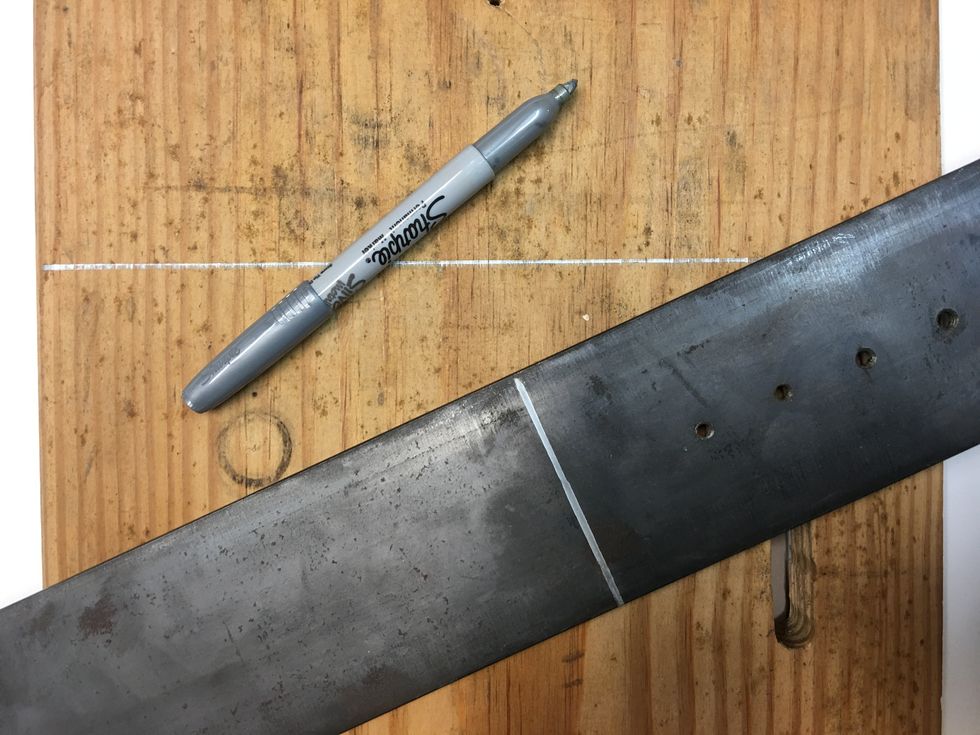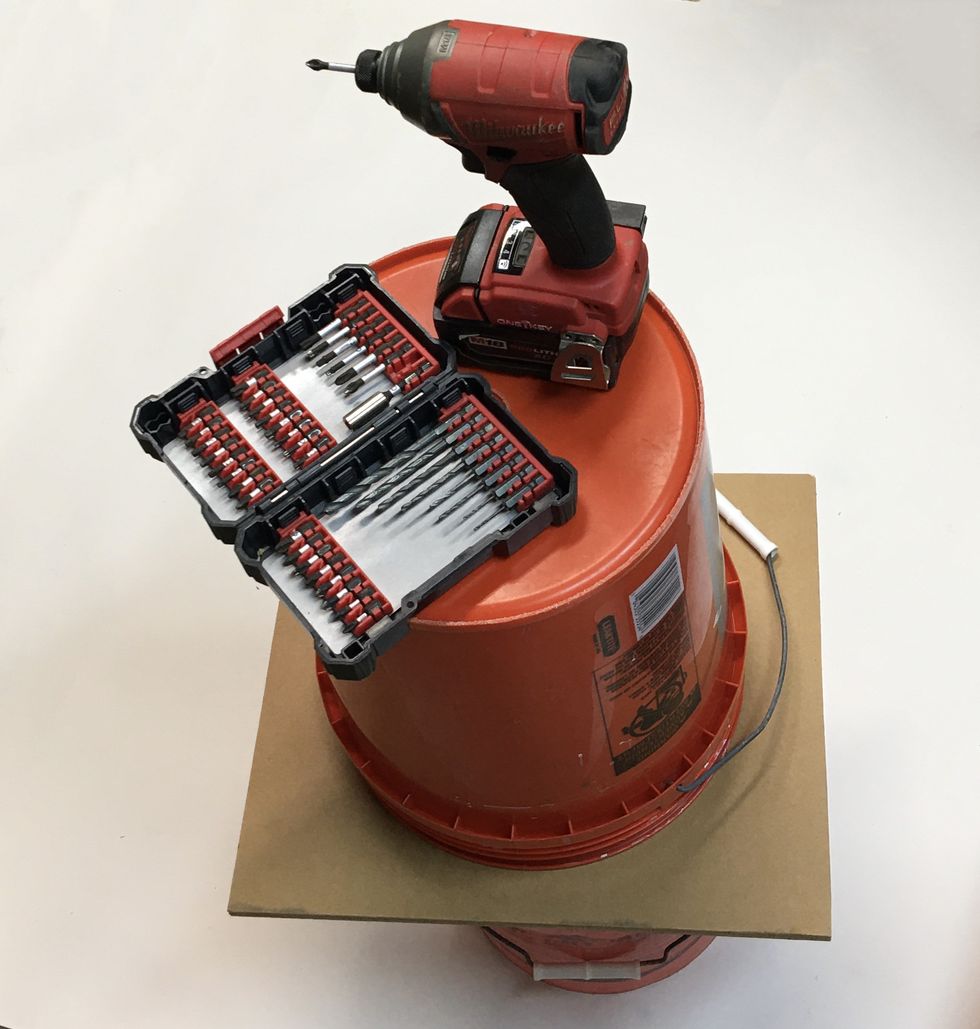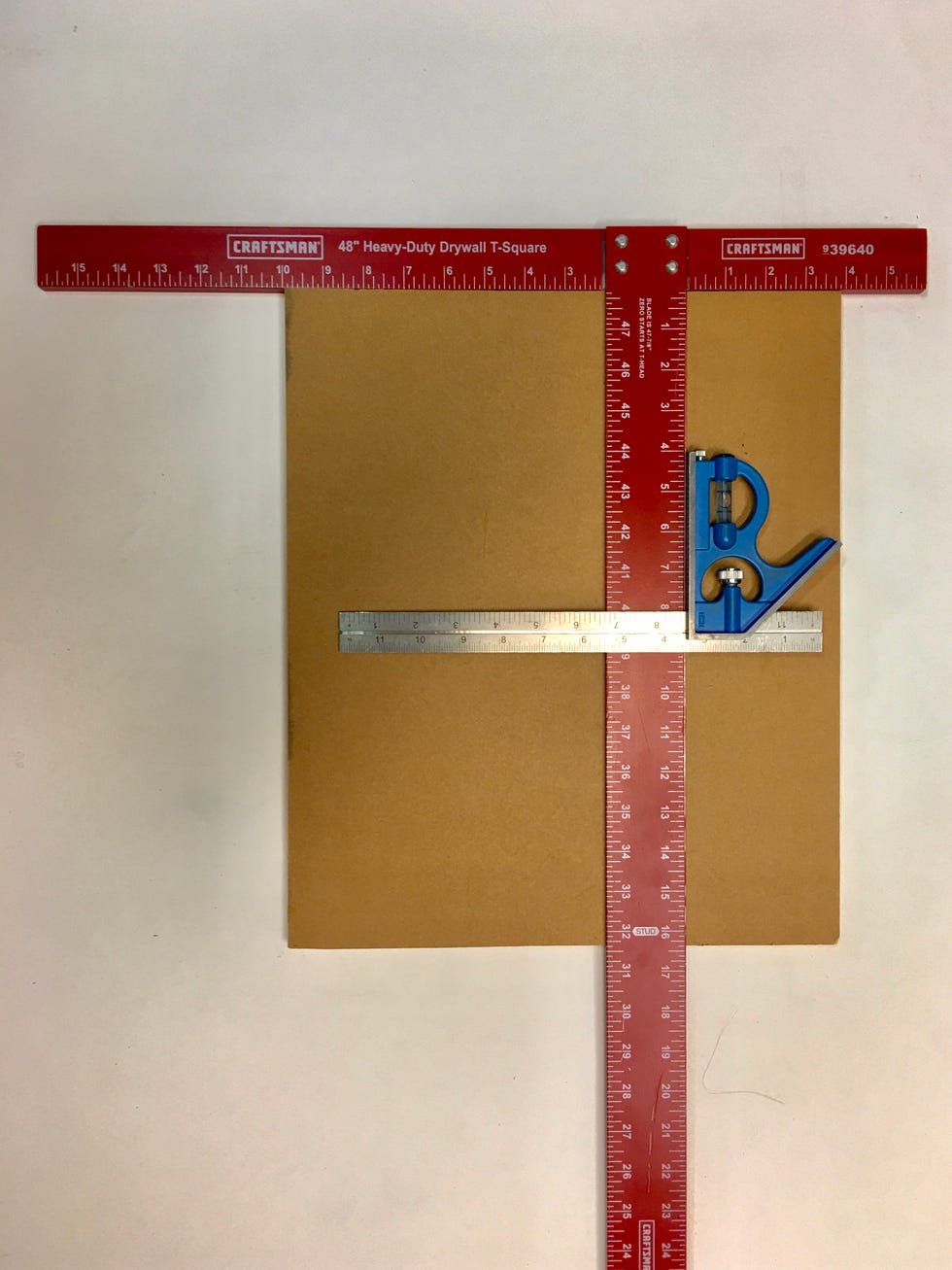My house, yard, and garage, plus the Popular Mechanics office and various volunteer locations all amount to one thing: a gigantic DIY laboratory. In my quest to be better at fixing, maintaining and building, I'm constantly looking for solutions—and have discovered five fun hacks. You don't have to be a master craftsperson to appreciate these. Anybody can need them. And anybody can do them.
Three Clamps Act Like a Vise
I have vises on my workbench and I have various setups such as a mobile work surface. But while helping a friend recently, I improvised this setup of three Irwin Quick Grip Clamps. These clamps are among the most useful tools recently invented and their wide flat sides make it possible to use them in a variety of configurations. To make this setup, clamp the vertical work-holding clamp in the jaws of the clamp that will be used horizontally. Then, simply clamp that horizontal clamp to the bench, sawhorse, or plywood work surface.
To use the setup, loosen the jaw of the work-holding clamp as you would normally, then slide in whatever you are working on and tighten the clamp.
Sandwich Bags, but Not for Lunch
I keep all manner of things in locking sandwich bags: my plumb bob and string, small hollow wall fasteners and their matching screws, batches of wire connectors, washers, screws, pencils, crimp connectors. If I need to keep it clean and organized, particularly when out on a job somewhere, I turn to sandwich bags. Use quart size bags for storing larger objects. For example, when I need to hand out safety glasses to volunteers, I keep them stored and hand them out from one of these bags. After the project, I clean and sanitize the glasses, and put them back in the bag.
Marking a Clean Bright Line
You can't saw or drill where you can't see the mark—a pencil mark on dark materials is often futile. That's why I keep a silver Sharpie pen in my tool kit because its color marks a clean bright line on dark surfaces, ranging from off white to black. Furthermore, a Sharpie line sticks to nearly all common building materials.
Two-Bucket Work Stand
I absolutely despise using the ground or floor as a work surface. I've lost tools and fasteners in the grass, broken stuff by stepping on it, and been frustrated too many times if for no other reason than having to constantly bend down and pick stuff up. One simple solution to this is to set up a two-bucket work stand. Two 5-gallon buckets stacked with a piece of plywood between them produces a surface to keep tools and fasteners at a height of about 30 inches off the floor. Note that the plywood you place between the two buckets has to be a couple inches larger than the bucket’s diameter (about 12 inches). Here, I illustrate the setup with a piece of MDO plywood that measures 14 x 16 inches.
Two-Square Layout
If one square is good, two are better. Pair a combination square (or rafter square or speed square) with a drywall T-square to make easy and accurate layout on sheet materials, whether they are plywood, particle board, drywall, or MDF. The second, smaller square slides smoothly down the length of the drywall T-square for marking perpendicular lines.

Roy Berendsohn has worked for more than 25 years at Popular Mechanics, where he has written on carpentry, masonry, painting, plumbing, electrical, woodworking, blacksmithing, welding, lawn care, chainsaw use, and outdoor power equipment. When he’s not working on his own house, he volunteers with Sovereign Grace Church doing home repair for families in rural, suburban and urban locations throughout central and southern New Jersey.
